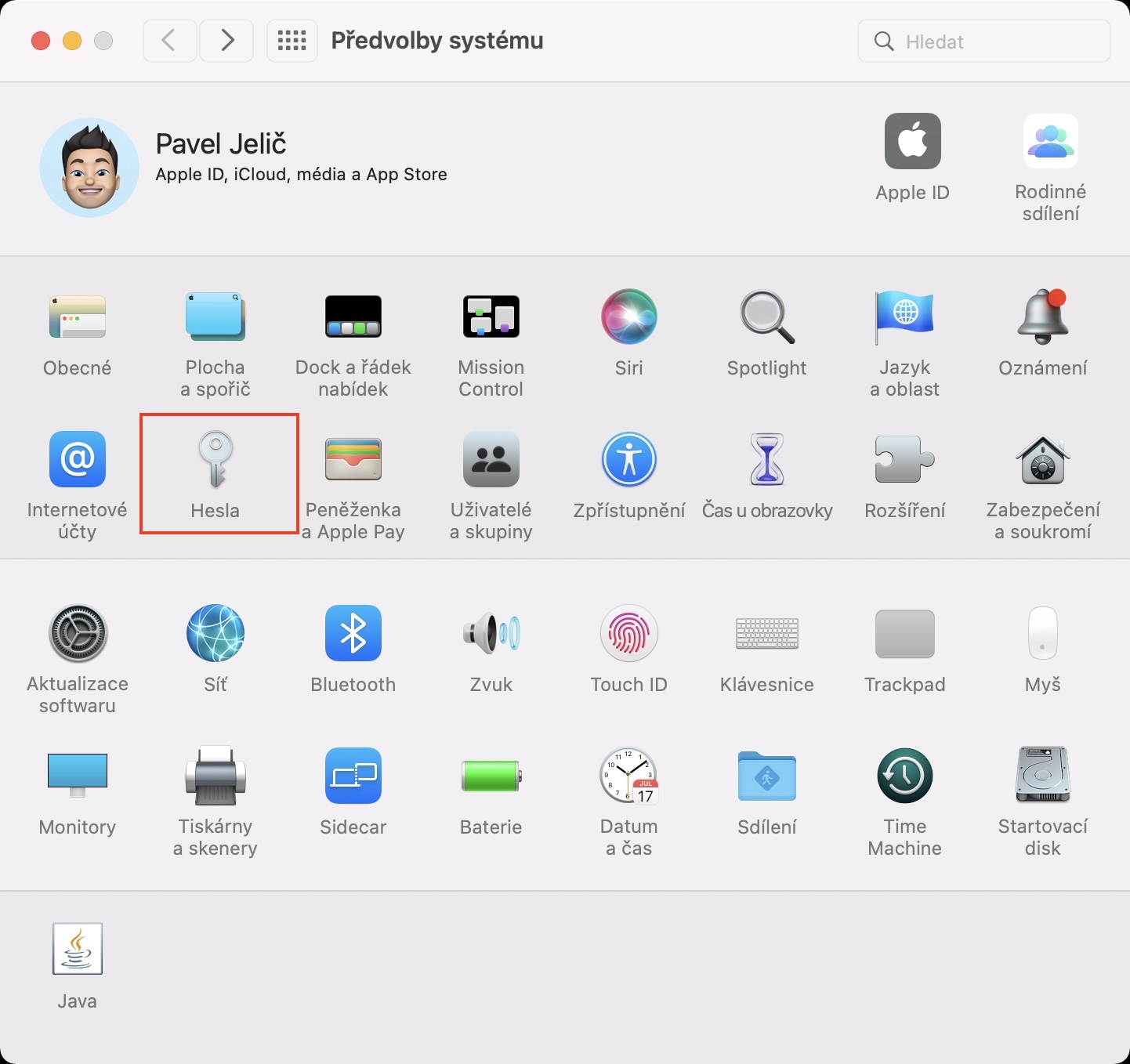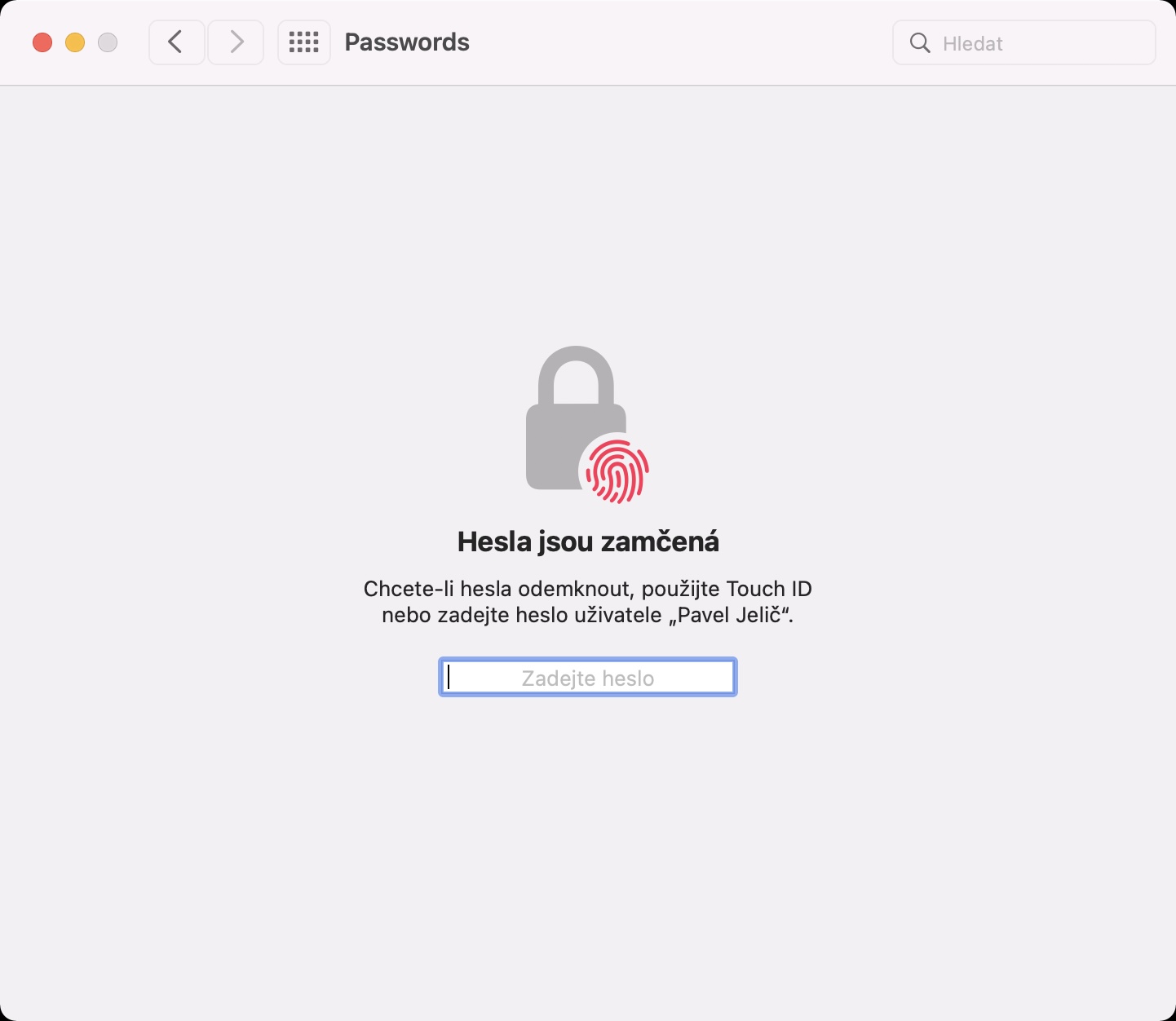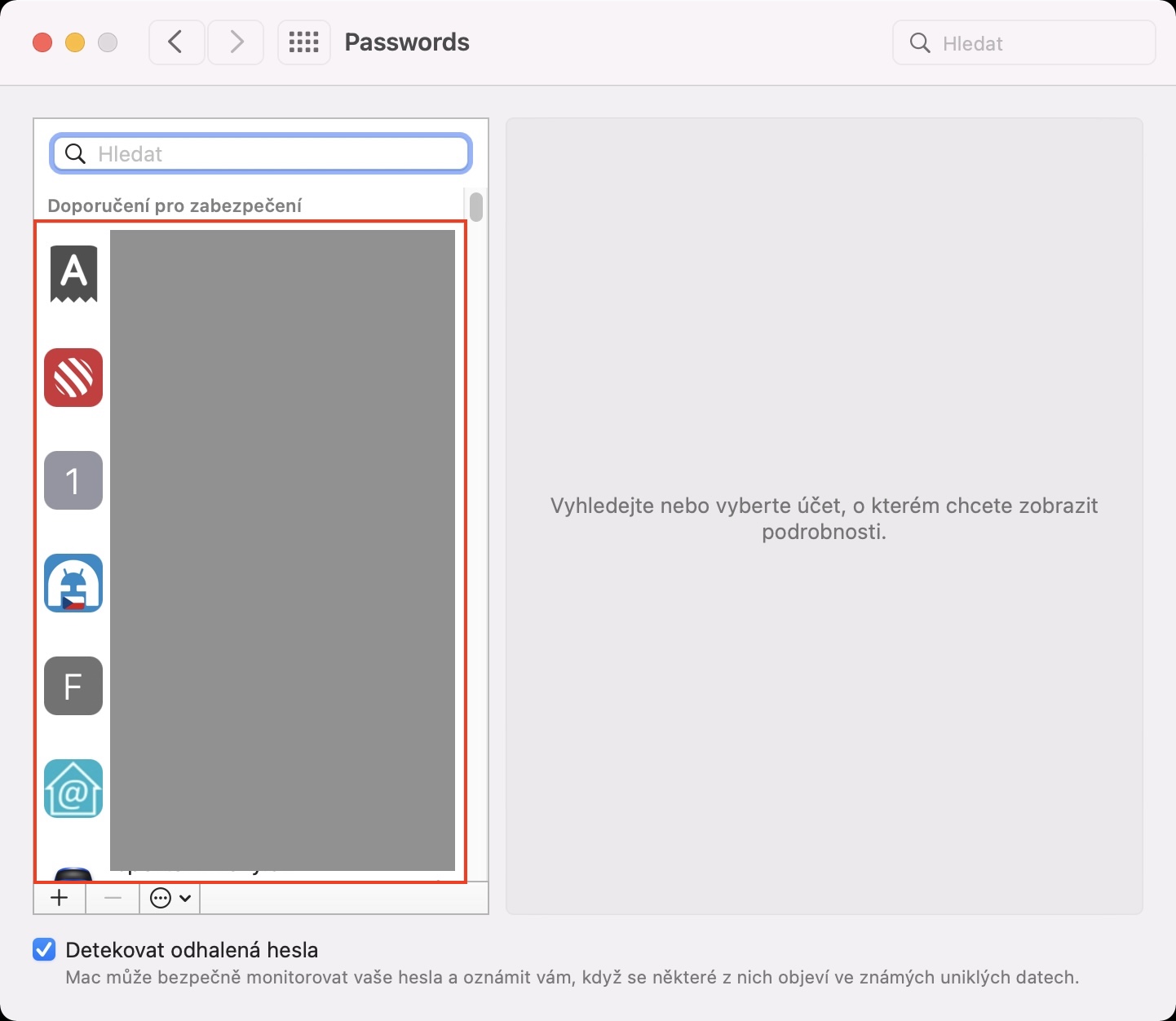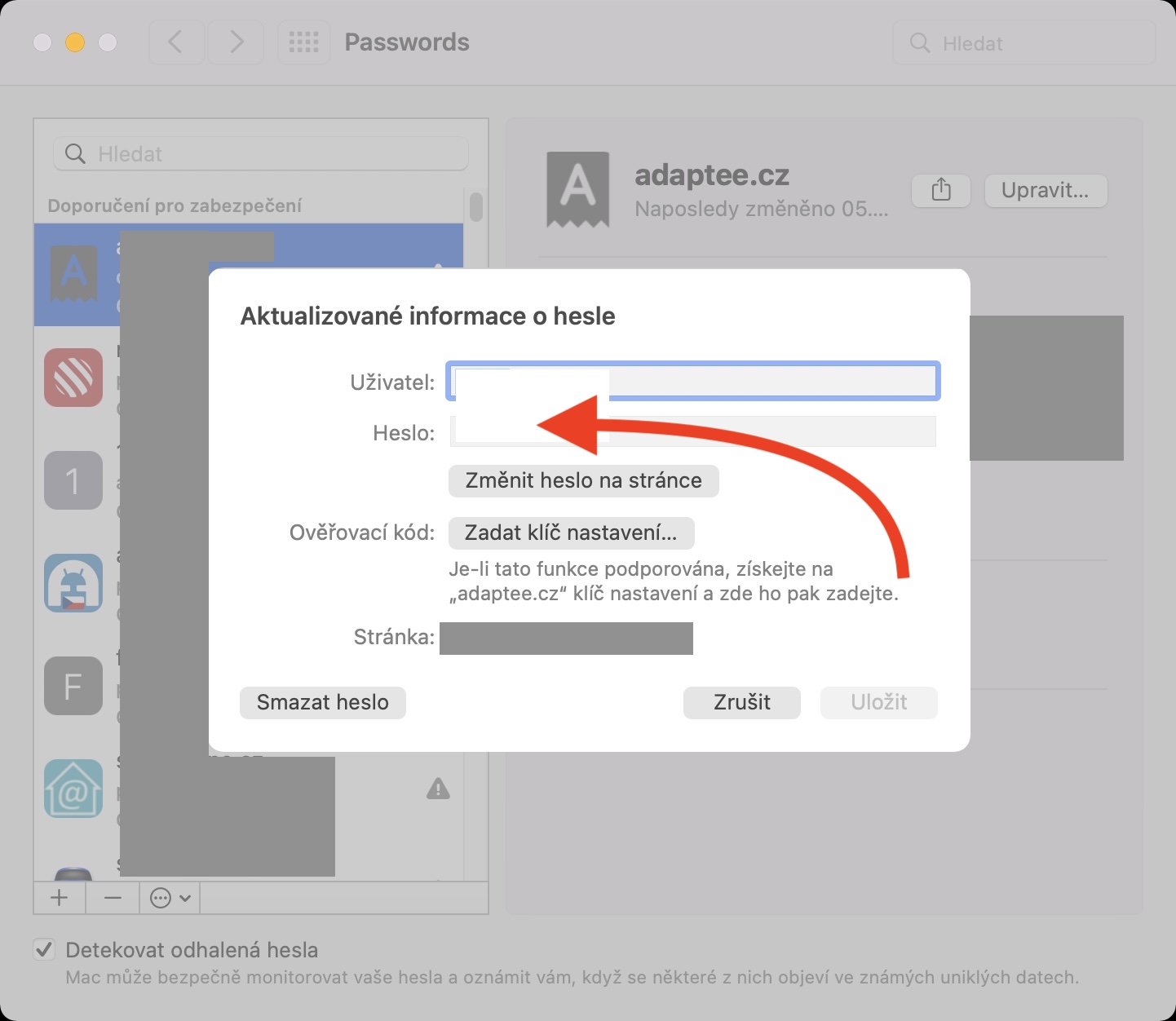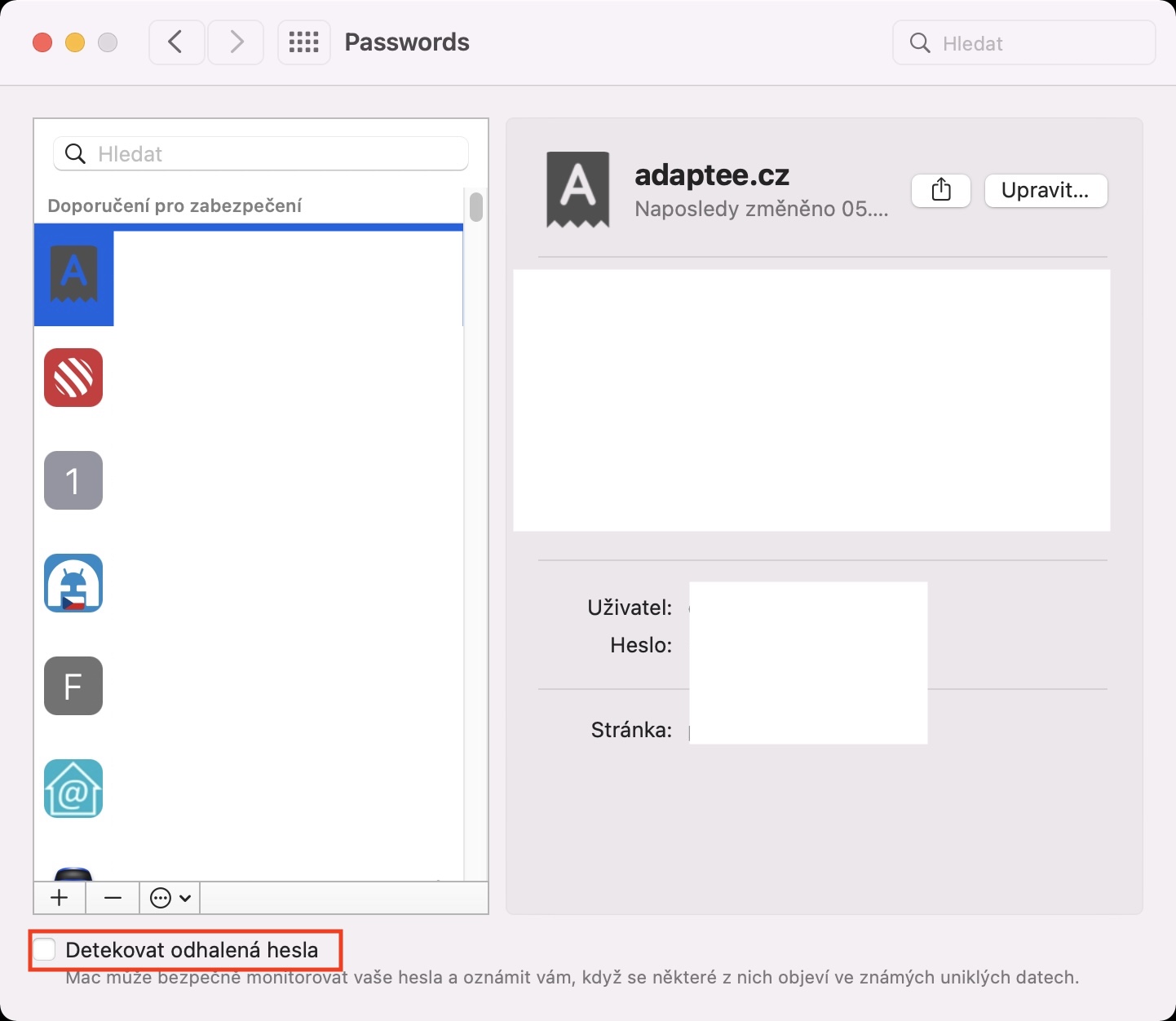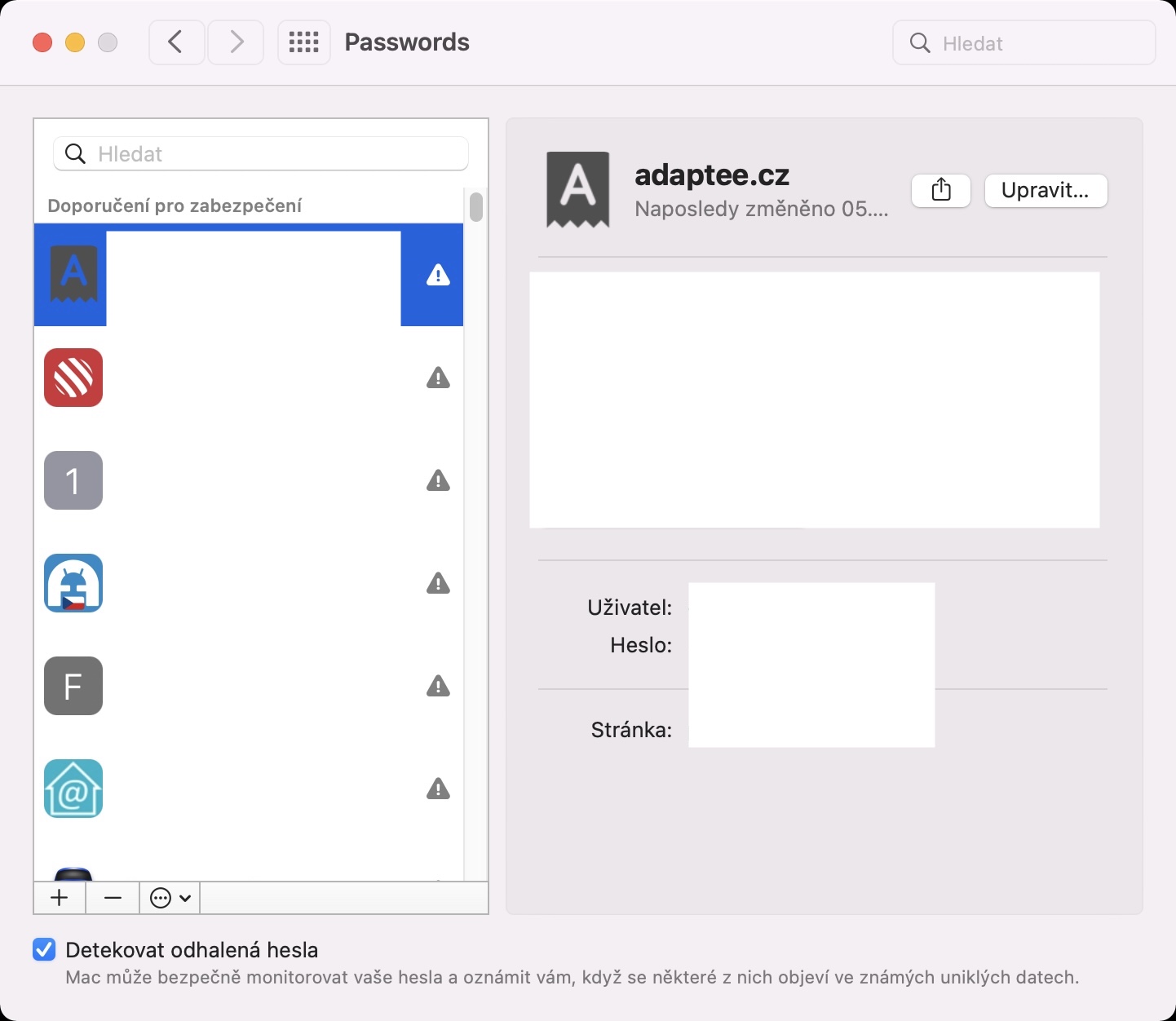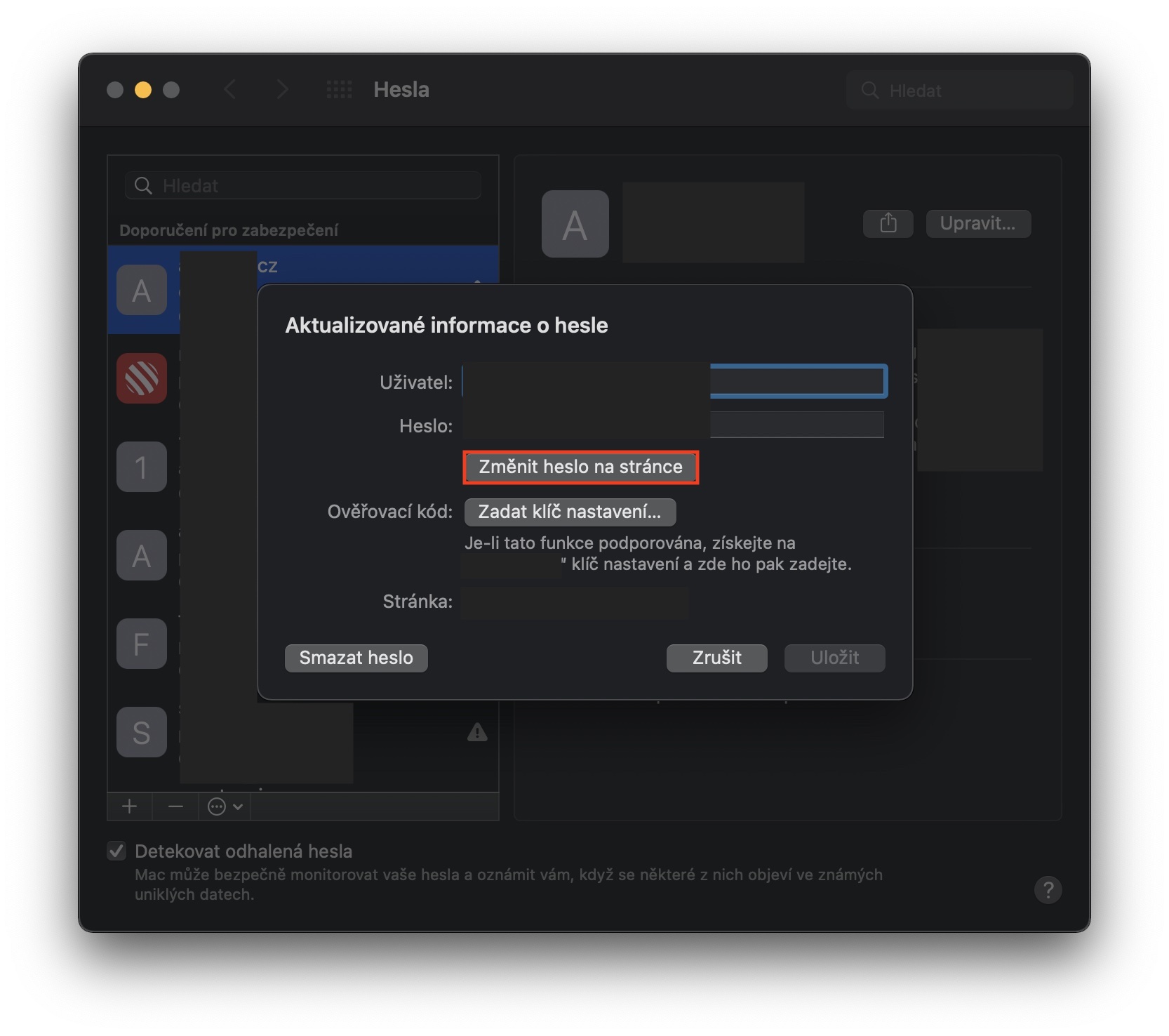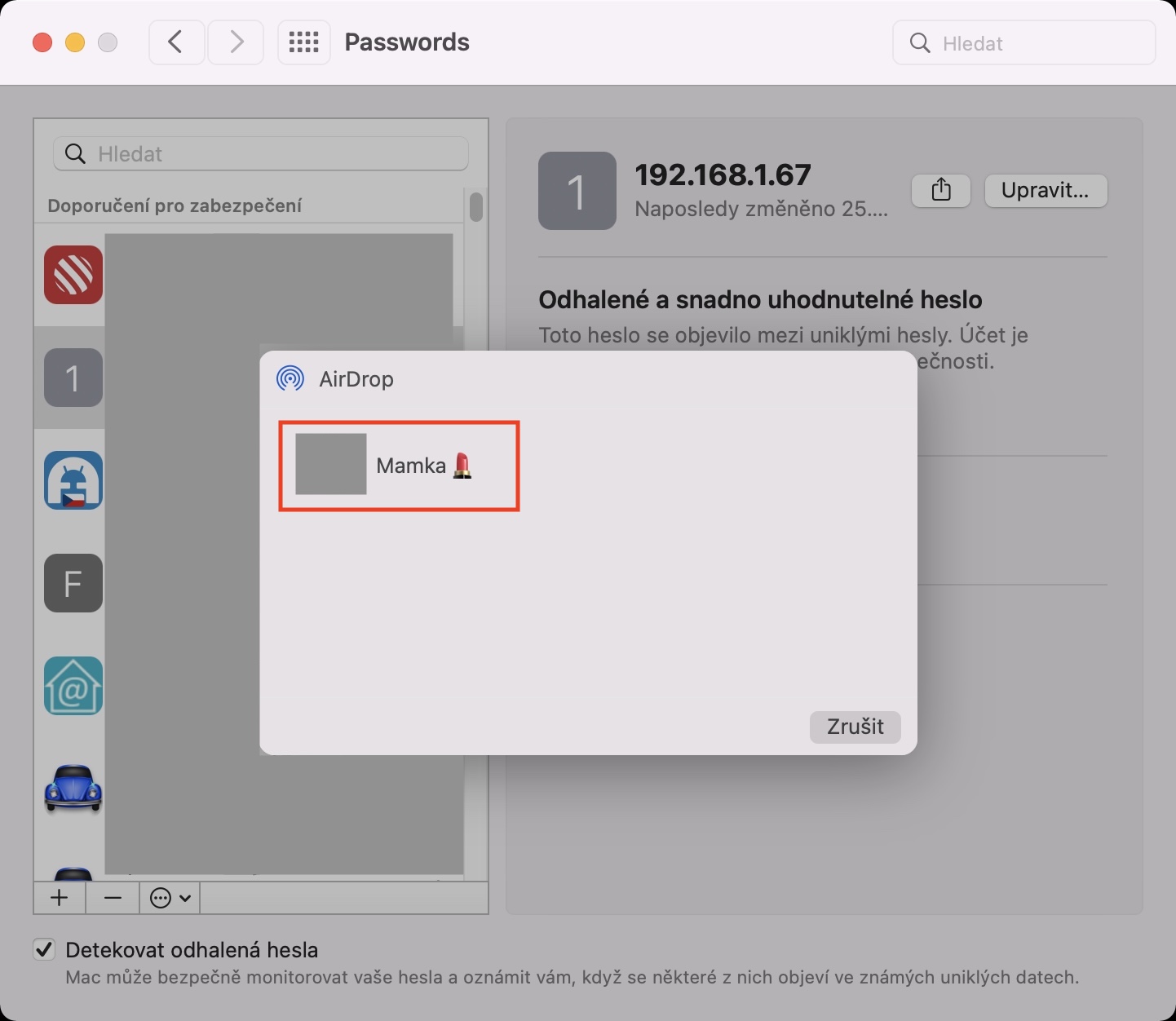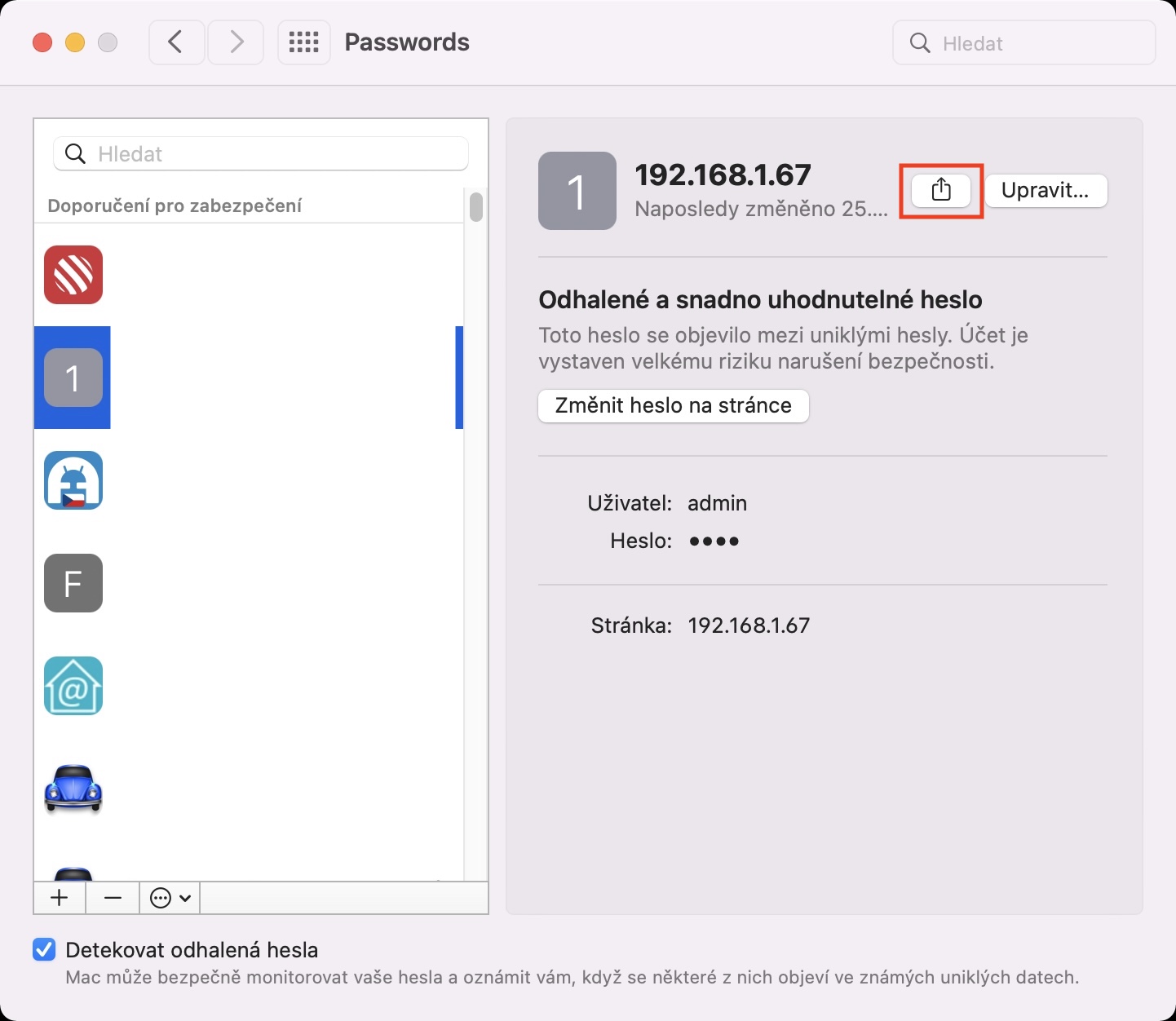If you are an iPhone user, you surely know that you can view all the passwords you save through Safari after purchasing them in Settings. In the event that you would similarly like to display passwords on a Mac, you had to use the native Keychain application until the arrival of macOS Monterey. Although it is functional and serves its purpose, it is unnecessarily complicated for most users. Apple was aware of this, so it came up with a brand new password manager on the Mac that is simple, intuitive and similar to the iOS one. You can find it in System Preferences → Passwords and in this article we will look at a total of 5 tips related to it.
It could be interest you
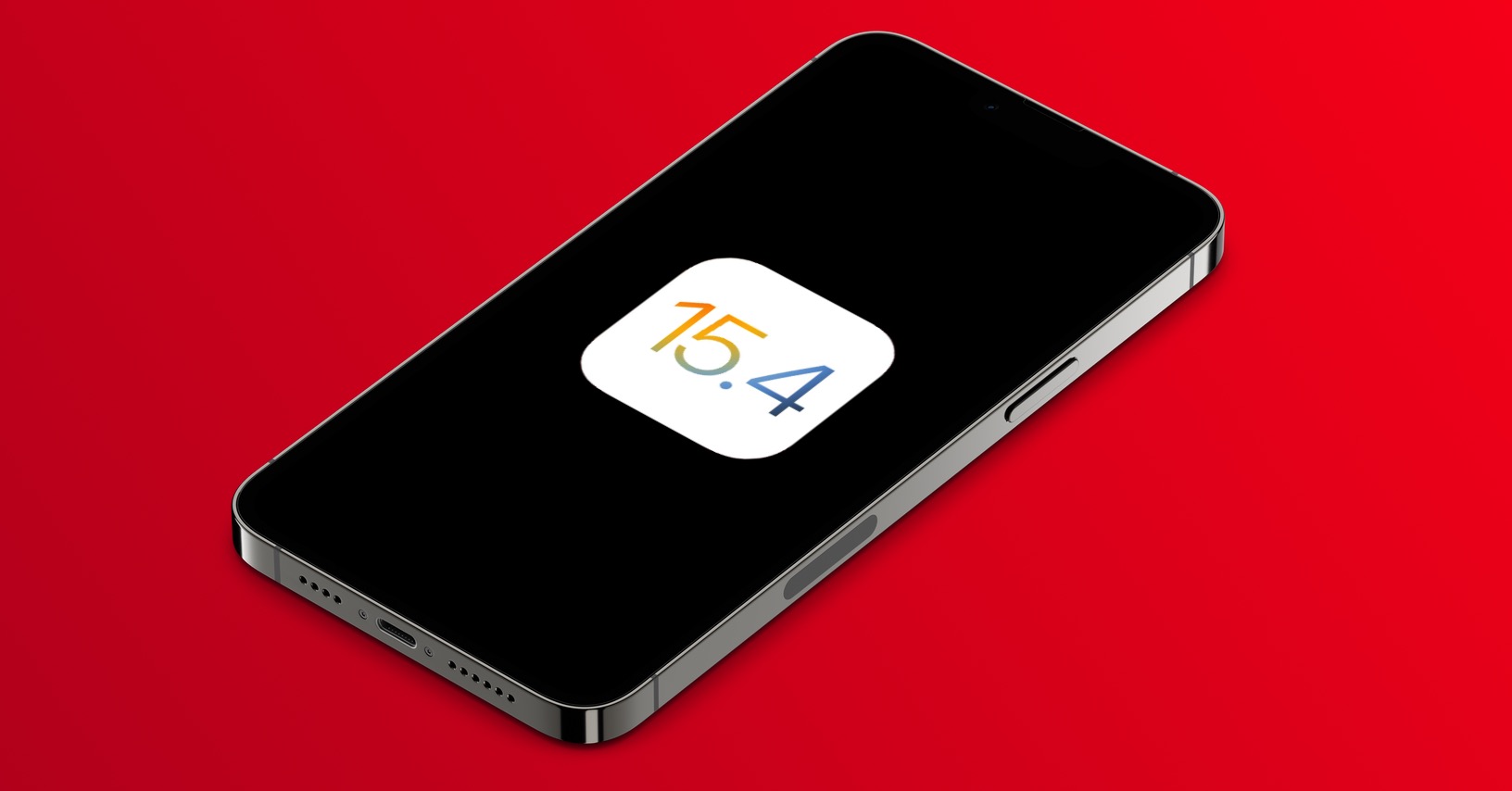
Manually add a new password
You can add a new entry to the password manager simply by registering and logging in to your account on a website. In this case, Safari will ask you if you want to add the password to the password manager. However, in certain situations, you may find it useful to manually add a password. Of course, you can easily do this too. So just go to → System Preferences → Passwords, where subsequently authorize and then tap the + icon in the lower left corner of the window. This will open a new window in which enter the website, username and password. Then just confirm the action by tapping on Add a password.
Editing an already added password
If you sign in to a user account in Safari and then change your password, Safari should automatically ask you if you want to update the password. However, this prompt must not be displayed in all cases, or you may click it by mistake. Even in such a situation, nothing happens, as you can edit the entry with the password manually. You can do this by going to → System Preferences → Passwords, where subsequently authorizes. Then select a from the list click on the record that you want to edit, then press the button at the top right Edit. A new window will then appear, where you can now proceed manual password change, which you confirm by tapping on Impose bottom right.
Detection of exposed passwords
Ideally, you should use a different password for each user account. Safari itself can automatically create a secure password for you, but in general, you should use uppercase and lowercase letters, numbers and special characters, and the password should also be long enough. However, it can happen to each of us that some passwords are leaked. The password manager includes a special function for exactly these cases, which can warn you that one of your passwords has been exposed. In any case, this function must be activated, in → System Preferences → Passwords, where subsequently authorize and then down check Detect exposed passwords. If any of your passwords are exposed, an exclamation point and a message will appear next to a specific entry.
Changing your password on the website
Have you found that you are using a weak password for one of your accounts that could be easy to guess? If so, have any of your passwords already been leaked? If you answered yes to even one of these questions, it is necessary that you stop using the password immediately and change it. You can of course perform this procedure by going to a specific website with an account, where you then change the password. But if you don't want to search for pages designed to change your password, you can use a password manager that will take you directly to a specific page. You just need to move to → System Preferences → passwords, where subsequently authorize. Then find and click on the record for which you want to change the password. Then in the top right click on edit, and subsequently on Change password on the page. This will open Safari with a page where you can change your password immediately.
Sharing passwords
From time to time, you may find yourself in a situation where you need to share some of your user account passwords with someone you know. In most cases, we choose the least secure way, which is to forward the password in an unencrypted form through one of the chat applications. You shouldn't be at risk, but you never know who might hack into your Facebook, for example, which can be a problem if you've shared your password via Messenger. Apple has also taken into account the safe sharing of passwords and offers a function in the password manager that allows you to share passwords quickly and easily via AirDrop. To share your password, go to → System Preferences → Passwords, where authorize. Then find a in the list click on the selected password, and then tap on at the top right share icon. Then all you have to do is they chose the person in question users within range, with whom you want to share the password. The other party must confirm acceptance of the password after sharing.

